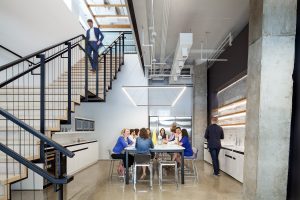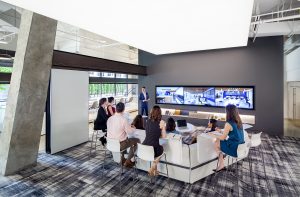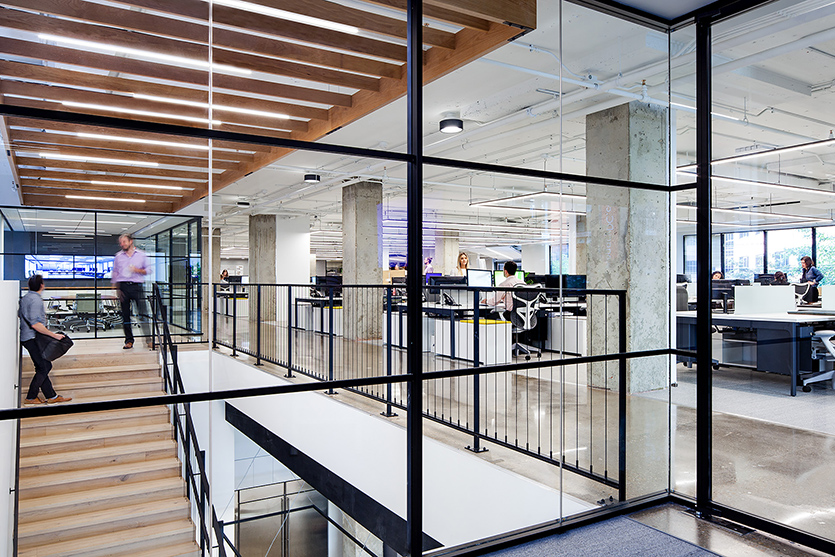As businesses and organizations of all sizes grapple with the COVID-19 (coronavirus) pandemic, many of us have had to think outside the box to keep doing the work that we do. The quarantine and social distancing measures have required us to get creative about how we perform tasks, collaborate on projects, and stay connected to our teammates.
But as the weeks and months roll on, what were once major challenges have become the new normal. We once had no idea how we could sustain basic business operations with so many staff members working remotely, but now that we’ve adjusted, there’s a new question some people are asking: what is the value of an office? Why do we need an office, anyway? Can’t we just keep working remotely?
While the internet has been indispensable for keeping our teams and tasks together, there are some things we can’t quite replicate in the virtual world. Here are some of the reasons why, in our professional opinion, the office isn’t going away anytime soon.
The office is where teams are built.
Team building is all about connecting with others, getting to know one another better, and strengthening our common bonds. It’s why we have conferences and retreats — opportunities to dig in with one another and spend time together in the same place. Likewise, we’ve found that some of the most memorable, meaningful, and enjoyable moments of team building happen when we can connect in person with others.
One reason why we still need offices — physical spaces in which we can laugh together, high five, make real eye contact, and enjoy each other’s presence — is because as humans, we are wired for human connection. Technology has offered us amazing opportunities to feel less alone during this uncertain and tumultuous time, but as we can all agree, nothing beats getting together in person. As designers, we think so much about which features can best serve our clients: natural light, opportunities for incorporating fitness throughout the workday, flexible spaces to work, meet, and think according to individual needs, space for quiet, and more. But when it comes to wellness, in-person, human connection is the ultimate design feature. At the core of what we do and who we are, we need and desire the presence of other people. This is why, even in the midst of the pandemic, quarantine, and social distancing, we’re sending calendar invitations for virtual happy hours. We still crave the connection to other people that can only be fully satisfied through spending time in each other’s presence.

The office is where ideas are strengthened.
Collaboration excels in the office. Solving problems together, in real time, helps strengthen ideas as we bounce back and forth between each contributor’s perspectives, questions, and insights. It’s easier for multiple people to contribute to an in-person brainstorming session than it is to hold it online. In a conference room, there’s no fuzzy connections, paused video streams, and awkward instances of, “What was that? Oh, sorry. You go ahead. No, you go ahead.” The elements of human connection help us solve problems and gain consensus by working together cooperatively, with the help of intuition and all of the subtle elements of body language, tone of voice, and nonverbal communication that’s significantly easier to access when we’re all in the same room together.
The office is the catalyst for efficient communication.
If you’ve ever thought, “That meeting could have been an email,” you might now be longing for the days when we could chat in person. Email and text chats have been crucial for working remotely in our current situation, but we miss the days when we could just walk over to a colleague’s desk for a quick question (and perhaps a smile). A quick, in-person chat is much more efficient than typing out your question, the context in which it has arisen, and the specifics and considerations of your quandary.
And when you consider the complexities of human communication we mentioned above, it’s no wonder we sometimes struggle to convey and interpret the right tone and mindset in our text-only interactions. We wonder whether someone is upset with us because in the absence of the ability to read nonverbal signals, we might read a negative tone where none was at all intended. Such difficulties of communication can detract from us working at our best, and they are simple problems that would be solved by spending time together in the same place, free to exchange ideas without a prescheduled phone call, calendar invitation, or less-than-clear chat message.

The office is where mentoring happens.
It’s easier to learn from other people when you get to work alongside them and watch them closely. From the way a person thinks through challenges to the questions they ask and the considerations they take into account, working in the same vicinity with someone means that you can learn so much from how they approach their work. It’s hard to access these same thought processes when you’re looped into a work-in-progress via email. Whether your colleague is ahead of you on your career journey or a peer on another team, working together in an office enables us to learn from each other as we tackle challenges in real time. It’s the difference between witnessing someone in action and learning about the actions they took after the fact. And it’s easier to learn from someone when you can build a relationship with them — human connections we’re hard-wired to develop in the presence of other people.
For better or worse, the COVID-19 (coronavirus) pandemic has changed the way we work, at least for the short term. As we look to the future of how these events will impact the way we work, we are certain of one thing: that while we may have new expectations and requirements for our workspaces, our human, hard-wiring for in-person connection with others will maintain the need for physical spaces for us to gather and work together.
